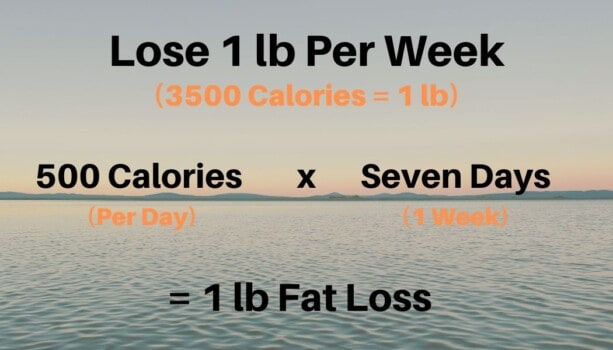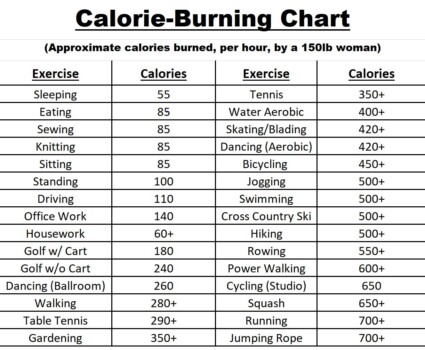Growing up, I was an overweight kid. I’d always been a little heavier than most of my friends and it sucked! Fortunately, as I got older, I figured out ways to burn fat and strategies for keeping the weight off. My jump rope proved to be one of the best tools for doing that.
So, does jumping rope burn fat? Jumping rope burns calories, which helps to burn fat. To burn fat, you need to burn more calories than you consume (also called a calorie deficit). Jumping rope is one of the most effective exercises to burn calories and help you achieve a calorie deficit.
(Related: How to calculate how many calories you’re burning when jumping rope)
Jumping rope has been proven to be more effective at burning calories than some of the most popular forms of cardio, including cycling, tennis, and even running. An average adult, jumping rope for an hour, can burn up to 1000 calories!
Here’s how it works.
How to Burn Fat by Jumping Rope
Burning fat, losing weight, shedding pounds, whatever you want to call it, has been made out to be this complex thing that requires supplements and expensive workout videos.
The truth is, burning fat is really simple. And, by jumping rope regularly you can accelerate your fat loss journey.
To burn fat, you need to burn more calories throughout the day than you take in. This is what’s referred to as a calorie deficit. For example, if you burn 2000 calories in a day [a typical daily value (DV) for an adult diet] and only consume 1500 calories, you would achieve a 500 calorie deficit.
Consistent calorie deficits, overtime, will cause you to burn fat.
One of the easiest ways to think about fat loss, in terms of calories, is to consider how many calories are in one pound of fat. There are 3500 calories in a single pound of fat.
So, in order to lose 1 pound of fat each week, you should target a 500 calorie deficit each day of the week (500 calories x 7 days/week = 3500 calories).

The nice thing about jumping rope is it’s one of the most effective forms of cardio in regard to calorie expenditure. Compared to a variety of other cardio exercises, jumping rope burns the most calories.
Here is a list of activities and how many calories you can expect to burn when performing them.

I usually jump rope for about 25-30 minutes everyday. This allows me to burn close to 500 calories! You can imagine how quickly you’ll burn fat by adding that to your daily routine.
There are some specific jump rope workouts that are great for burning fat. I’ll outline of few of them later in this article. You can also check out my Jump Rope HIIT article for more great routines.
(Related: 5 Jump Rope HIIT Workouts – HIIT Every Muscle Group)
How Long Should I Jump Rope to Lose Weight?
Unfortunately, there’s not a one-size-fits-all answer to this question. Although simple, there are a variety of variables to losing weight.
Regardless of how long you jump rope for, if you’re consuming more calories than you’re burning you’re going to gain wait. The best way to ensure you lose weight is by monitoring your calorie intake and exercising regularly.
That said, if you want to burn more calories you should focus less on how long you’re jumping rope for and more on the intensity at which you’re jumping rope.
This actually goes for any aerobic activity you partake in.
By increasing the intensity of your jump rope sessions, and increasing your heart rate, you’ll burn significantly more calories than working out at a lighter pace. Additionally, you’re able to keep your workouts shorter and give you more time back in your day.
Some of my favorite jump rope workouts utilize a workout format called high-intensity interval training or HIIT. Here are some of my favorite HIIT workouts to help you on your weight loss journey.
3 Powerful Jump Rope Workouts to Burn Fat
When it comes to losing weight it’s best not to overthink it. Again, burning fat is really simple. You can see great results by just picking up a jump rope and putting in the work.
That said, there are a few specific jump rope workouts that I’ve had a lot of success with when targeting fat.
The two types of workouts I like to rely on for fat loss are HIIT (High-Intensity Interval Training) and Tabata. Here are two of my favorite HIIT workouts and one of my favorite Tabata workouts. All three of these are guaranteed to torch calories.
*With both HIIT and Tabata, aim for a 2:1 work to rest ratio*
Before I jump into these workouts, check out this video from one of my favorite YouTube channels, Jump Rope Dudes. These guys know their stuff. They are also big advocates for high-intensity interval training for burning fat.
1. Jump Rope HIIT Workout for Burning Calories
The idea with HIIT, or high-intensity interval training, is to exercise at 70% – 80% of your max heart rate while allowing yourself brief periods of recovery between rounds.
The reason why HIIT is so effective is because when you increase the intensity of your exercise your body produces more epinephrine and norepinephrine. Both of these hormones are believed to play a significant role in lipolsys (the breakdown of fat and other lipids).
The first jump rope HIIT workout for burning fat is an easy one, great for beginners. I use a 3 by 3 format (3 rounds of 3 exercises).
Jump Rope HIIT (Repeat for 3 Rounds):
- Basic Jump Rope (60 seconds)
- Jump Rope High Knees (60 seconds)
- Double Unders (60 seconds)
(Rest: 90 seconds between rounds)
Make sure to push yourself during rounds, ensuring your reaching that 70% to 80% of your max heart rate. Also, while it’s not necessary, I workout with a Fitbit to monitor things like my heart rate and how many calories I’ve burned.
You might think about picking one up.
2. Jump Rope HIIT Workout for Losing Weight
Another one of my favorite HIIT workouts for burning fat incorporates both a jump rope and some body-weight exercises. The great thing about this routine is it promotes more muscle growth than jumping rope alone.
And, muscle is extremely important when it comes to losing weight!
Some suggest that for every pound of muscle, your body burns an additional 50 calories while resting! That’s right, your body is burning calories while you sit on the couch and watch TV (otherwise known as “resting metabolic rate”).
While there’s not a lot of evidence to support the 50 calorie theory, studies have shown muscle burns 3 times more calories than fat.
For this fat burning HIIT workout I use a 5 by 5 format (5 rounds of 5 exercises).
Jump Rope HIIT (Repeat for 5 Rounds):
- Basic Jump Rope (45 seconds)
- Burpees (15 reps)
- Jump Rope High Knees (45 seconds)
- Squat Jumps (15 reps)
- Basic Jump Rope (45 seconds)
(Rest: 2 minutes between rounds)
It’s also really important to make sure you’re drinking plenty of water during these workouts. Not only will you be sweating a lot and need to replenish those fluids, but there is a clear correlation between water intake and fat loss.
Water is essential for the body to function properly. To ensure your body functions at it’s highest level, including your metabolism (i.e. to burn calories), you need to keep yourself hydrated at all times.
3. Jump Rope Tabata Workout for Fat Loss
Tabata is essentially a variation of HIIT. It utilizes the same core concept of high-intensity exercise, followed by short periods of rest, with a work to rest ratio of 2:1.
The way you can tell a Tabata workout from a traditional HIIT workout is by the length and number of rounds. A Tabata workout always has 8 rounds, each 20 seconds long, with 10 seconds of rest between each round.
Lasting a total of only 4 minutes, Tabata workouts are as quick as they are powerful. And, when combining Tabata with jump rope, you’re guaranteed to torch calories and hit your fat loss goals.
Here is my favorite jump rope Tabata workout for burning fat.
Jump Rope Tabata:
(Rest: 10 seconds between each exercise)
- Basic Jump Rope (20 seconds)
- Jump Rope Boxer Step (20 seconds)
- Jump Rope High Knees (20 seconds)
- Basic Jump Rope (20 seconds)
- Jump Rope Double Unders (20 seconds)
- Basic Jump Rope (20 seconds)
- Jump Rope High Knees (20 seconds)
- Basic Jump Rope (20 seconds)
For this routine, I’ll typically run through it 5 times for a 20 minute workout. You can also switch things up by substituting various body-weight exercises for the jump rope.
There are a number of Tabata apps you can download to help keep track of your workouts. My favorite is the Tabata Timer, by Oleksandr Serhiienko.
Does Jump Rope Burn More Calories Than Running?
I used to be a pretty avid runner. Whether it be a fun run or in the gym on a treadmill, running was my go-to cardio. Ever since I picked up a jump rope though, jumping rope has been my favorite way to burn calories and cut fat.
And, for good reason too!
Not only is it easier on your body, but on average jumping rope burns more calories than running.
While there are several factors that determine how many calories you burn, such as weight, age, and sex, on average runners burn about 100 calories per mile. That’s assuming they’re running roughly a 10-minute mile.
Also, distance is a great indicator at how many calories you’ll burn when running. For example, you can run 3 miles, in 15 minutes, and burn roughly 300 calories. You could also walk that same distance, taking you 45 minutes, and burn a similar amount of calories.
When it comes to jumping rope, studies suggest jumping for 10 minutes at a moderate pace provides the same benefits as jogging for 30 minutes! They’ve also compared it to cycling for 2 miles and playing 18 holes of golf.
Regardless of what kind of exercise you’re performing, jumping rope seems to provide the most benefits when it comes to burning calories and fat.
Jumping Rope vs Running (the full breakdown)
Can Jumping Rope Burn Belly Fat?
One of the most stubborn areas on the body to get rid of fat is definitely the midsection. It’s also one of the most dangerous areas to carry fat.
And not only that, but it’s so frustrating to put in all the hard work exercising regularly and eating healthy to still have love handles.
So, what can you do about it? Can jumping rope burn belly fat?
Jumping rope is a great exercise for burning fat. However, “spot reduction”, or the reduction of fat in specific areas, is not possible. In order to lose fat in your belly you need to lose fat across your entire body. This process requires time, exercise, and a balanced diet.
“Asking your body to lose fat in one area is like trying to remove a cup of water from one corner of a filled bathtub” – Lecia Whitlock, an instructor at The National Personal Training Institute
That said, jumping rope is a great activity to help you burn calories and lose that unwanted belly fat. When compared to other forms of exercise and cardio it definitely burns the most calories.
Does Jump Rope Burn Muscle?
As mentioned earlier in this article, muscle mass plays a significant role in the amount of calories you burn and can greatly impact your ability to lose fat.
This is why it’s important to do whatever possible to prevent the deterioration of muscle mass.
It’s a common belief that jumping rope along with other forms of cardio can actually decrease your muscle mass and cause you to lose strength. While this is partially true, and there’s some studies to back up the theory, it ultimately depends on a few variables.
Things like when you perform cardio, how much cardio you perform, the type of cardio you choose, and your diet directly impact your ability to retain muscle and burn fat.
Best Type of Cardio to Burn Fat and Retain Muscle
High impact cardio, like running, is actually the worst kind of cardio you can do when looking to burn fat and retain muscle. When performing high-impact cardiovascular exercises your body takes longer to recover which will directly impact your strength training.
Low-impact cardio, like jumping rope, has been shown to be the most effective due to the body’s ability to recover quicker.
The Right Amount of Cardio to Lose Fat and Keep Muscle
In addition to selecting the right kind of cardio, it’s also important to perform cardio at the right time. There’s evidence to suggest performing cardio after your strength training is a better strategy than beforehand, in terms of building muscle and losing weight.
It make sense too! I often will jump rope in the morning and do some body-weight exercises in the afternoon.
The reason you want to save cardio for after your workout is because you’ll be less fatigued during your workout, which enables you to build and conserve muscle more effectively.
The Right Time to Perform Cardio to Lose Weight and Maintain Muscle
Surprisingly, when you do cardio can play a big role in your ability to burn fat and still maintain your muscle. Especially if you’re doing lengthy cardio sessions, it’s best to separate your cardio from your strength training.
Studies suggest 6 hours between the two produce the best results.
Research suggests separating aerobic exercise from strength training may have an effect on reducing belly fat as well. One study published in the Scandinavian Journal of Medicine & Science In Sports found the participants that alternated between aerobic and strength training (one day on, one day off) saw a significant difference in belly fat reduction than the group that performed them on the same day.
This 24-week study found the participants that alternated between aerobic and strength days saw their belly fat mass reduced by 21%, whereas the group that performed it on the same day only say a 7% reduction.
The Right Diet for Losing Fat and Keeping Muscle
As you can probably imagine, diet is a crucial component to not only losing fat but also maintaining muscle mass. It’s an interesting balance you need to create too.
As we spoke about earlier, the only way to burn fat is to create consistent calorie deficits. However, in order to maintain muscle it’s imperative to eat enough food to feed your muscles. You can see how that can be tricky…
Eat too much, you’ll gain weight. Eat too little, your body will consume its’ muscle for energy (also referred to as catabolism).
The ideal way to go about losing weight while maintaining your gains is by taking it slow. And by slow, I mean making sure to eat enough throughout the day and create small calorie deficits.
Instead of starving yourself and creating 1000 calorie deficits, try creating 300 or 400 calorie deficits. This will obviously take longer and require discipline, but it’s best in the long run if you want to retain your muscle.
Related Questions
Does jump rope build muscle? Jumping rope is a great exercise for building muscle. Jumping rope activates your arms, shoulders, hamstrings, quads, calves and even parts of your back. Given it’s a cardiovascular exercise first, the muscle you build from jumping rope is primarily lean muscle.
Is jumping rope enough exercise? While jumping rope is a great exercise and one of the best forms of cardio, it’s suggested you incorporate other forms of exercise as well. For a more balanced regimen, leave a few days during the week for weight training. This will allow you to put on more muscle mass and create an even greater aesthetic.
Get After It!
